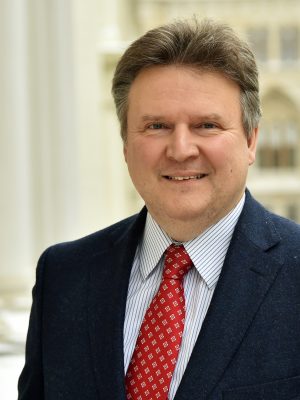Vienna, Austria
General Information
Administrative status
Capital of Vienna
Historic Centre of Vienna
Registration Year
2001
Historical function
Artistic
Location and site
Vienna, situated on the Danube River in the eastern part of Austria, developed from early Celtic and Roman settlements into a Medieval and Baroque city, the capital of the Austro-Hungarian Empire. It played an essential role as a leading European music center, from the great age of Viennese Classicism through the early part of the 20th century.
Urban morphology
Vienna is rich in architectural ensembles, particularly Baroque mansions and gardens as well as the late 19th-century Ringstrasse ensemble lined with grand buildings, monuments, and parks. The property consists of the city’s medieval core (based on the Roman settlement), the principal Baroque ensembles with their axial layouts, and the Gründerzeit constructions from the beginning of the modern period.
Registration criteria
Criterion (ii): The urban and architectural qualities of the Historic Centre of Vienna bear outstanding witness to a continuing interchange of values throughout the second millennium.
Criterion (iv): Three key periods of European cultural and political development – the Middle Ages, the Baroque period, and the Gründerzeit – are exceptionally well illustrated by the urban and architectural heritage of the Historic Centre of Vienna.
Criterion (vi): Since the 16th century Vienna has been universally acknowledged to be the musical capital of Europe.
Historical reference
- At the beginning of the 12th century, the Viennese settlement expanded beyond the Roman defenses, which were demolished. During the Ottoman conflicts in the 16th and 17th centuries, the medieval town’s walls, which surrounded a much larger area, were rebuilt and provided with bastions. This remained the core of Vienna until the medieval walls were demolished in the second half of the 19th century.
- In 1683, Vienna became the capital of the Habsburg Empire and developed rapidly, becoming an impressive Baroque city.
- A new phase in the history of Vienna took place when its 34 suburbs were incorporated into the city and the emperor ordered the demolition of the fortifications around the inner city. The opportunity was taken to create one of the most significant 19th-century ensembles in the history of urban planning, greatly influencing the rest of Europe in this crucial period of social and economic development.
- The late 19th and early 20th centuries testify to further creative contributions by Viennese designers, artists, and architects in the periods of the Jugendstil (Art Nouveau), the Secession, and the early Modern Movement in architecture.
Source : https://whc.unesco.org/en/list/1033/
Palace and Gardens of Schönbrunn
Registration Year
1996
Historical function
Imperial and artistic
Location and site
The site of the Palace and Gardens of Schönbrunn is outstanding as one of the most impressive and well-preserved Baroque ensembles of its kind in Europe. Additionally, it is a potent material symbol of the power and influence of the House of Habsburg over a long period of European history, from the end of the 17th to the early 20th century.
Urban morphology
It is impossible to separate the gardens from the palace, of which they form an organic extension: this is an excellent example of the concept of Gesamtkunstwerk, a masterly fusion of many art forms.
The Orangery on the east side of the main palace building is, at 186 m, the longest in the world. The Great Palm House is an impressive iron-framed structure, 114 m long and divided into three Sections, erected in 1880 using technology developed in England.
Registration criteria
Criterion (i): The Palace and Gardens of Schönbrunn are an especially well-preserved example of the Baroque Princely residential ensemble, which constitutes an outstanding example of Gesamtkunstwerk, a masterly fusion of many art forms.
Criterion (iv): The Palace and Gardens of Schönbrunn are exceptional by virtue of the evidence that they preserve modifications over several centuries that vividly illustrate the tastes, interests, and aspirations of successive Habsburg monarchs.
Historical reference
- From the 18th century to 1918, Schönbrunn was the residence of the Habsburg emperors. It was designed by the architects Johann Bernhard Fischer von Erlach and Nicolaus Pacassi and is full of outstanding examples of decorative art.
- A small hunting lodge and later summer residence of the Habsburg family was rebuilt after total destruction during the last Turkish attack in 1683.
- At the peak of Habsburg power at the beginning of the 18th century, when imperial Vienna following the Turkish reflected its regained significance in spectacular examples of newly developing Baroque art, Schönbrunn was one of the most important building projects of the capital and residency.
- The ample Baroque gardens with their buildings (Gloriette, Roman ruins etc.) and statuary testify to the palace’s imperial dimensions and functions. The original intention, when they were laid out in the 18th century, was to combine the glorification of the House of Habsburg with a homage to nature.
- Together with its gardens, the site of the world’s first zoo in 1752, it is a remarkable Baroque ensemble and a perfect example of Gesamtkunstwerk.
Photos

News
19 February 2019
World Heritage Cities Between Development and Preservation – OWHC Workshop and Conference in Vienna
Vienna, Austria
8 January 2016
Vienna awards winner of the 2015 Photo Competition
Vienna, Austria
Northwest Europe and North America
Contact

Mr. Michael Ludwig
Mayor
City Hall of Vienna
Lichtenfelsgasse 2
Vienna, Austria
A-1082
+43 1 4000 81111
buergermeister@wien.gv.at
Ms. Regina Wiala-Zimm
International Relations Officer
Chief Executive Office for International Relations
Friedrich-Schmidt-Platz 3
Vienna, Austria
1082
+43 1 40 00-82576
regina.wiala-zimm@wien.gv.at
Mr. Ernst Woller
First President of the Parliament of the State of Vienna
Vienna City Council
Vorsorge, Obere Donaustraze 63
Vienna, Austria
1020
436 644 207 604
ernst.woller@wien.gv.at
Mr. Omar Al-Rawi
Member of the Provincial Parliament - Member of the Vienna City Council
Vienna City Council
+43(0) 1 22422/1534
omar.al-rawi@spw.at



